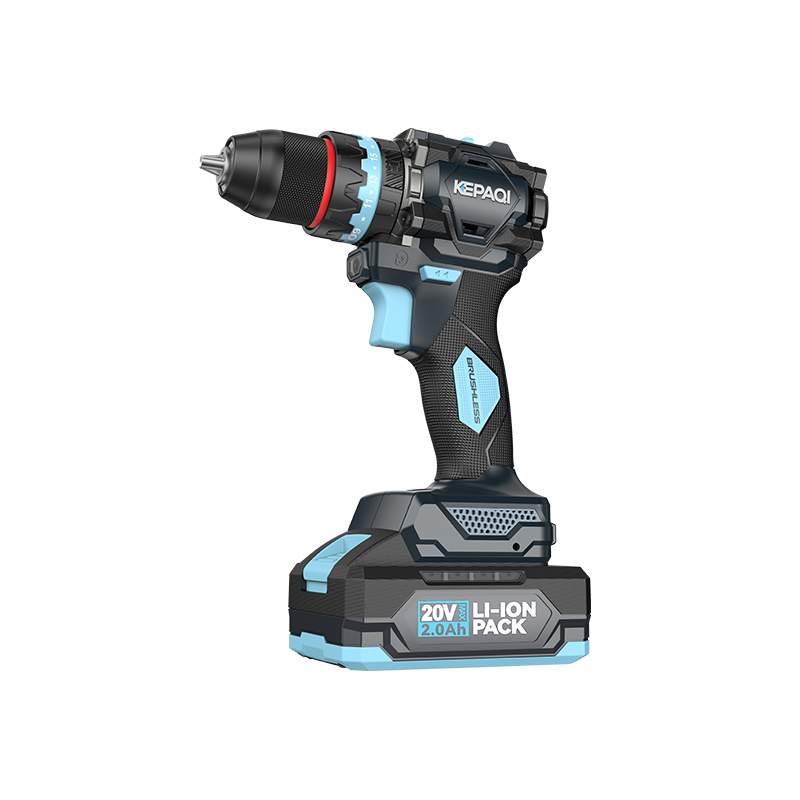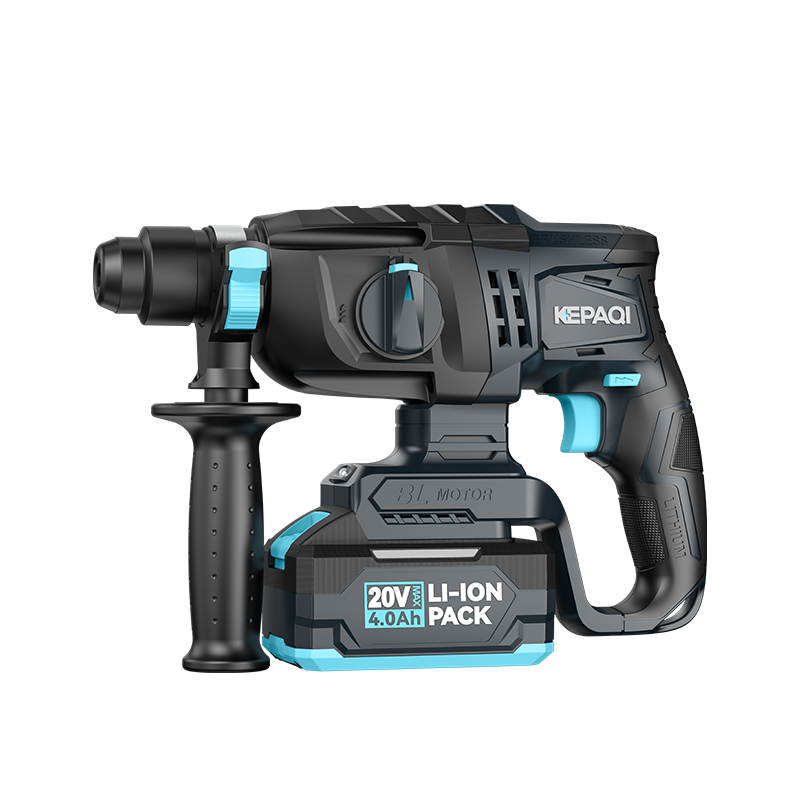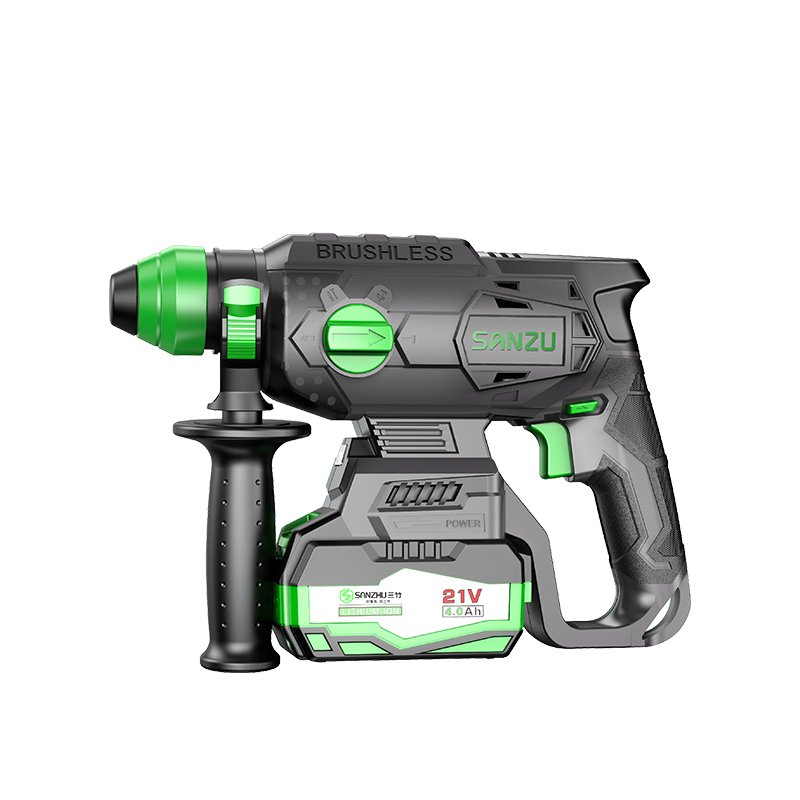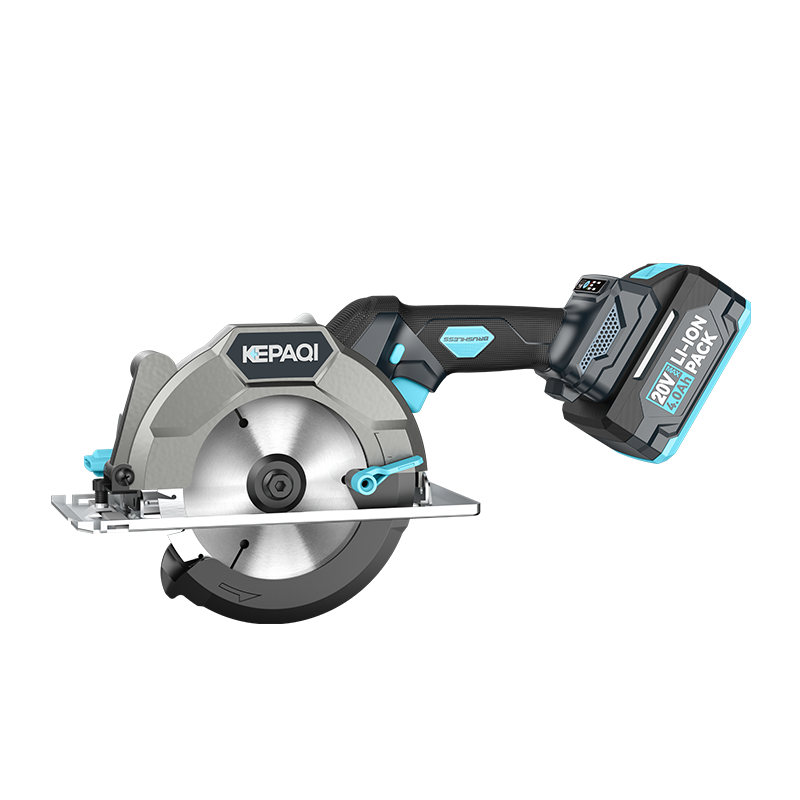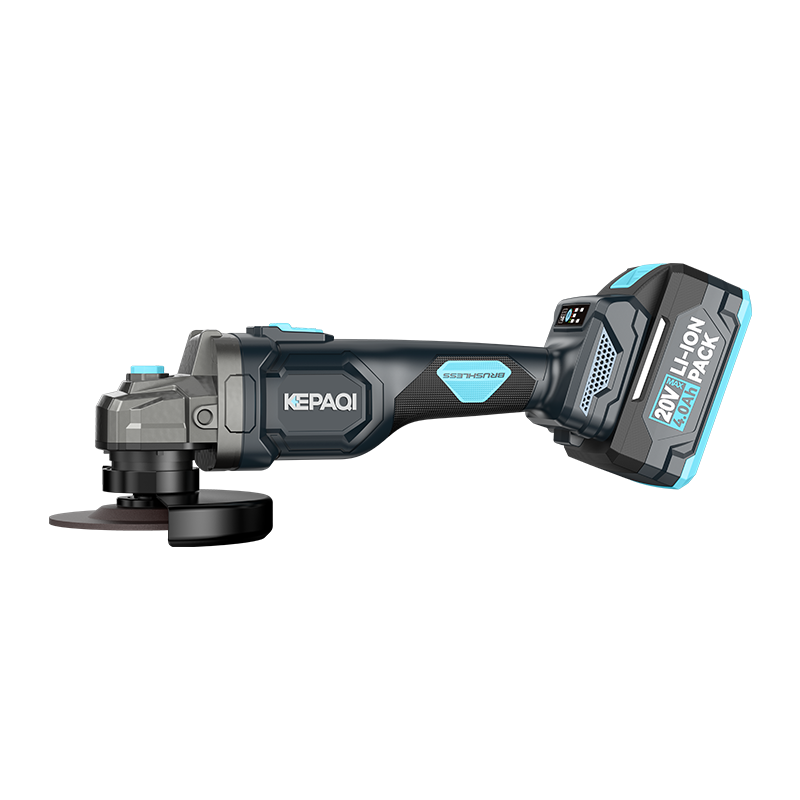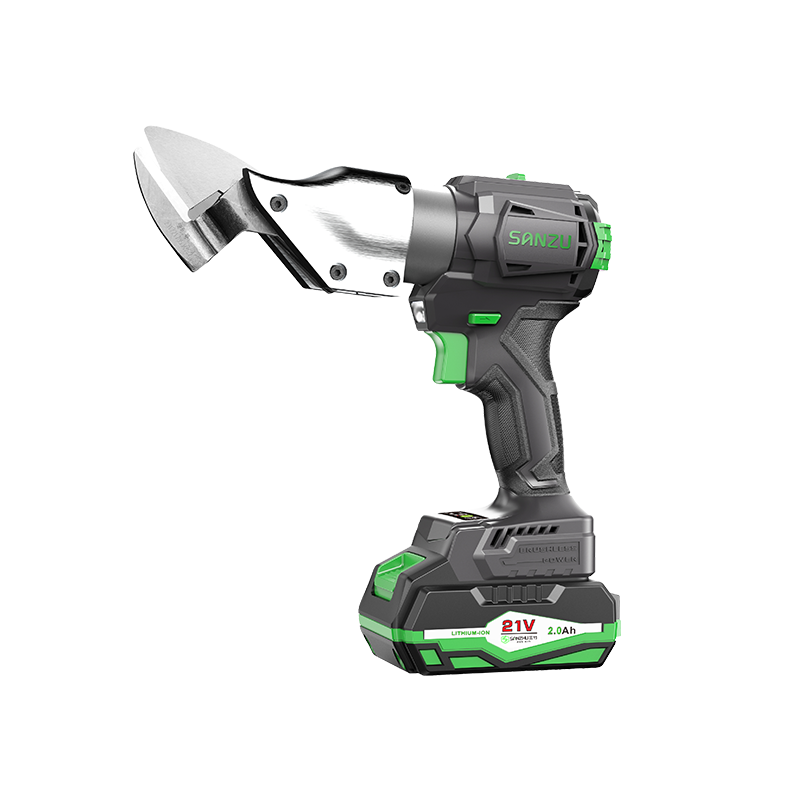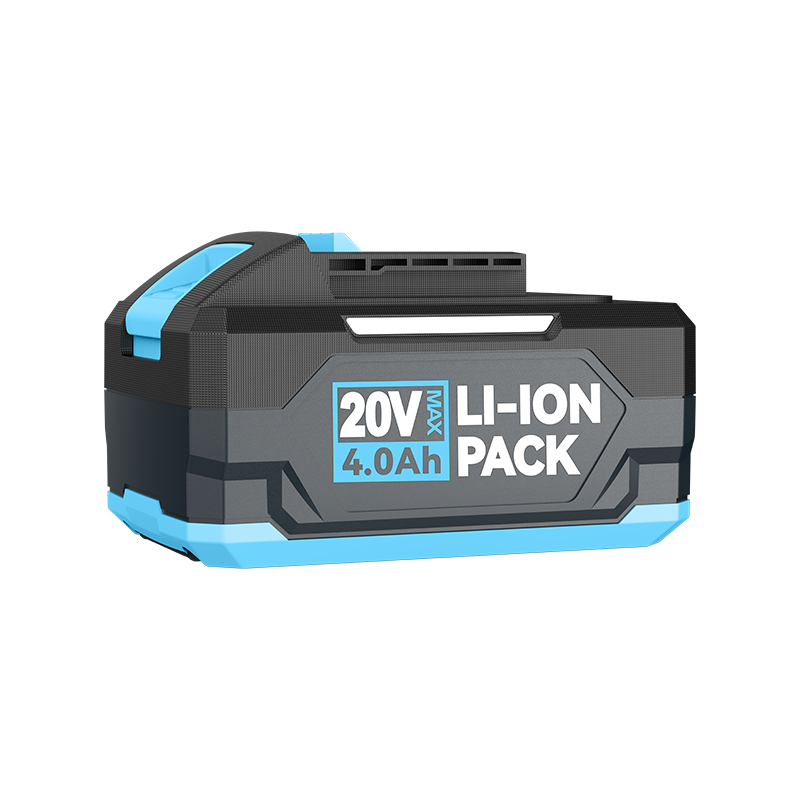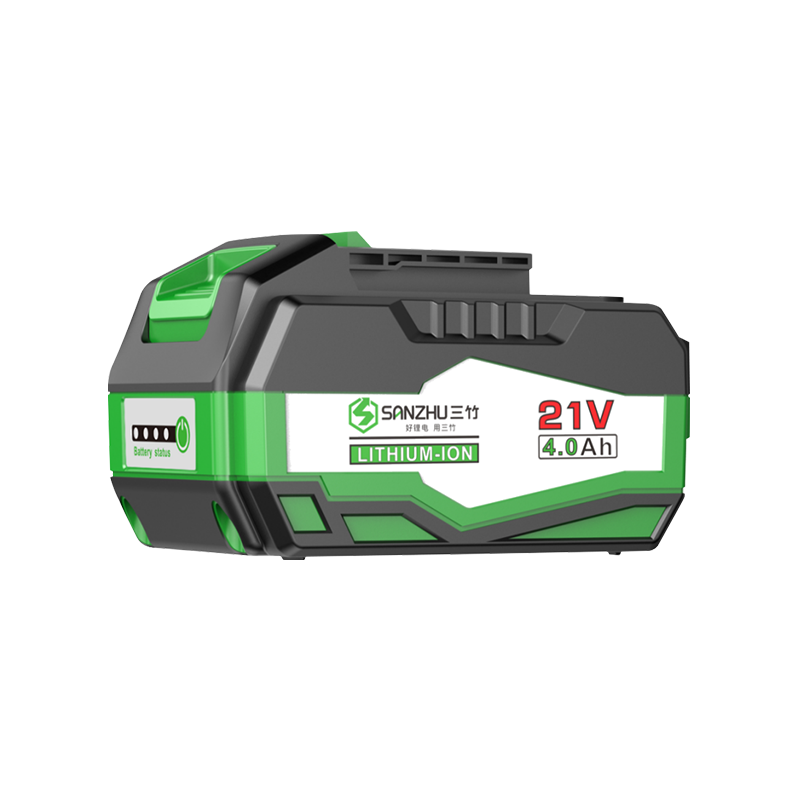Is The Cordless Drill Just A Simpler Tool, Or Does It Hold A Crucial Role?
Introduction to Cordless Drills and Impact Drivers
In the field of modern carpentry, construction, and home maintenance, the advent of cordless power tools has significantly increased work efficiency and flexibility. Among the numerous power tools, the Cordless Drill and Impact Driver are two of the most fundamental and frequently used tools for fastening and drilling. Both are powered by rechargeable batteries, offering great portability, but their inherent working principles and design goals are fundamentally different.
The Cordless Drill is a versatile rotary tool primarily designed to drill holes in various materials (such as wood, metal, and plastic) and to drive or remove screws using its adjustable torque clutch. It is the "Swiss Army Knife" of the toolbox, known for its versatility, ease of use, and ability to control torque.
The Impact Driver is a specialized, highly efficient fastening tool. It uses a unique impact mechanism to deliver powerful instantaneous torque when encountering high resistance while driving or removing fasteners, making it excel at handling large or long screws.
Clarifying the Common Confusion and the Goal of the Article
Although these two tools look similar, both featuring a trigger and a battery pack, many users often confuse their functions:
- Power Misconception: People often assume that an impact driver is merely a more powerful drill.
- Application Range Confusion: Users are unsure which tool to use for a task to achieve the best results and highest safety.
The goal of this article is to thoroughly clarify the technical differences, operating principles, and optimal application scenarios between the Cordless Drill and Impact Driver. We will compare them in depth across multiple dimensions, including mechanical structure, power output, and ergonomics, ensuring the reader understands when to prioritize "control" and "precision" and when to use "sheer power" and "speed."
Market Positioning and Target Users
While both cordless drills and impact drivers are fastening tools, their market roles and target user groups have different emphases:
| Feature |
Cordless Drill |
Impact Driver |
| Primary Function |
Primarily drilling, secondarily driving screws |
Primarily driving and removing screws |
| Main Advantage |
Precision and Versatility |
Torque and Efficiency |
| Typical Applications |
Home repair, furniture assembly, drilling standard holes |
Deck building, heavy carpentry, automotive repair, long screw fastening |
| User Segmentation |
Suitable for all users, especially home DIY users who need precise drilling and torque control |
Suitable for professional contractors, carpenters, and technicians who need high efficiency and high power |
| Toolbox Role |
Essential general-purpose, all-in-one tool |
Powerful supplementary tool for professional and heavy-duty projects |
What Makes A Cordless Drill The "Jack-Of-All-Trades" Of Power Tools?
What is a Cordless Drill?
A cordless drill is a portable rotary tool powered by a rechargeable battery. Its core function is to create circular holes in various materials (such as wood, metal, and plastic) using rotary motion, and to precisely drive or remove screws through its built-in clutch system. It is the "Swiss Army Knife" of the toolbox, popular for its versatility, ease of use, and ability to control torque.
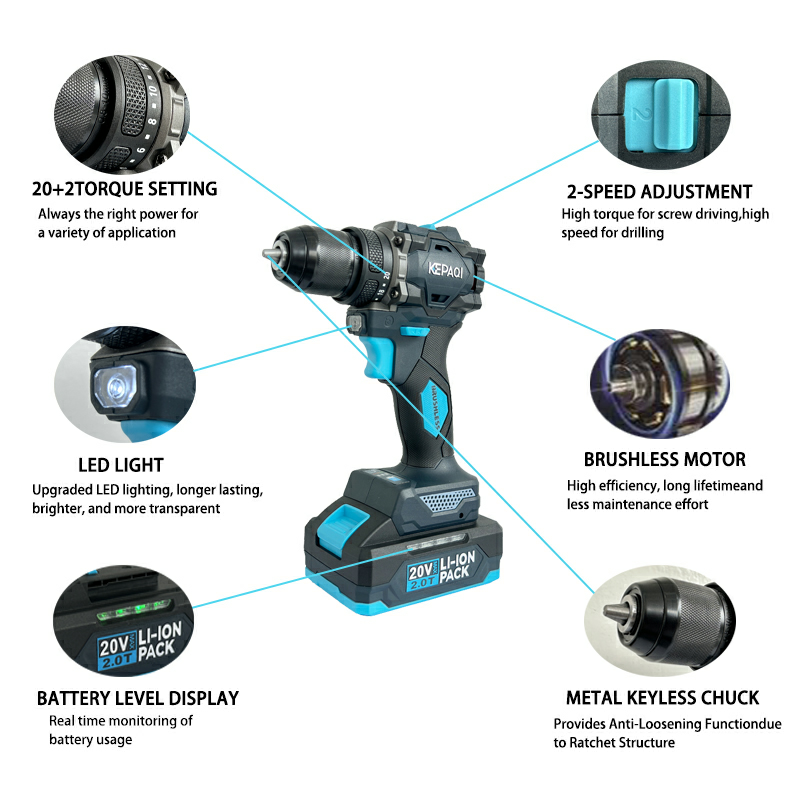
Common Uses (Drilling Holes, Driving Screws)
The scope of cordless drill applications is extremely wide, mainly focusing on the following aspects:
- Drilling Holes:
- Performing precise, clean drilling on wood, plastic, and soft metals.
- Using specialized bits (such as glass or tile bits) to drill holes in brittle materials.
- Used to drill Pilot Holes to ensure large screws or nails can enter the material accurately and smoothly.
- Driving and Removing Screws:
- Assembling furniture, cabinets, or any DIY project requiring screws.
- Precisely securing screws in sensitive materials, preventing screw head cam-out or material splitting.
Key Features (Clutch, Variable Speed, Chuck Size)
The design core of the cordless drill lies in "control" and "precision," which is reflected in its key components:
- Adjustable Clutch: This is the signature feature that distinguishes a drill from other fastening tools.
- Principle: The clutch is a set of mechanical gears that allows the user to preset a maximum torque value. Once the torque output of the drill reaches this set value, the clutch will make a clicking sound and disengage, stopping rotation (even if the motor is still running).
- Function: Ensures the screw is driven to the appropriate depth, neither "over-tightened" (damaging the screw head or material) nor "under-tightened" (failing to secure properly).
- Setting: Usually indicated by a numbered scale; the higher the number, the higher the allowed torque.
- Variable Speed Trigger and Gearing:
- Trigger Control: The depth of the trigger directly controls the rotational speed (RPM), enabling smooth startup and precise control.
- Mechanical Gearing: Most drills have two or three mechanical speed settings (e.g., 1st gear: low speed/high torque for driving screws; 2nd gear: high speed/low torque for drilling).
- Three-Jaw Chuck:
- Structure: The chuck is the part at the head of the drill used to clamp the drill bit or driver bit, typically consisting of three movable "jaws."
- Compatibility: This design allows it to clamp various shapes and sizes of round or hexagonal drill bits/shanks.
- Size: Common chuck sizes are 3/8 inch (approx. 10 mm) and 1/2 inch (approx. 13 mm); larger chucks accommodate larger bits for heavier work.
Core Mechanisms of the Cordless Drill
Clutch Mechanism and Importance
| Clutch Setting |
Torque Output |
Applicable Scenario |
Risk Prevention |
| Low Torque (1-5) |
Lowest torque |
Driving small screws, soft materials (e.g., drywall, pine) |
Prevents screw head stripping and material cracking |
| Medium Torque (6-15) |
Medium torque |
Driving medium-sized screws, furniture assembly, medium-density materials |
Balances fastening force and material protection |
| High Torque (16-24/Drill Symbol) |
Highest torque |
Driving large screws or drilling (bypassing the clutch) |
Used for fastening requiring maximum force where precision is less critical |
Gearbox and Gear Ratios
Cordless drills switch internal gear sets to change output characteristics, enabling function switching:
- Low Speed Gear (usually marked 1): Higher gear ratio, sacrificing speed for high torque, with an RPM range typically around 0-450 RPM. Ideal for driving large screws or heavy-load tasks like mixing paint.
- High Speed Gear (usually marked 2): Lower gear ratio, providing high rotational speed, with an RPM range typically 0-1800 RPM or higher. Ideal for quickly drilling holes in wood or metal.
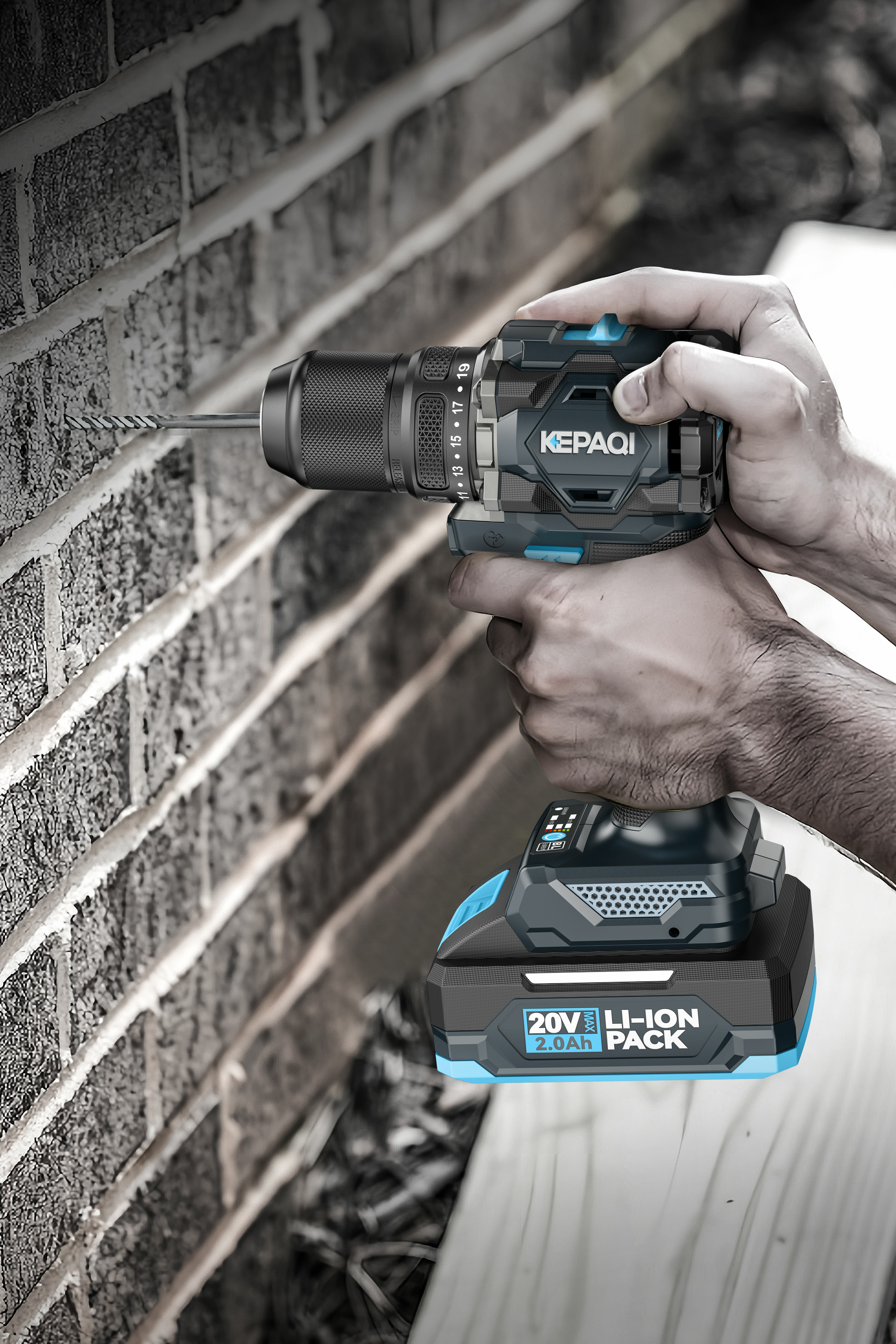
Overview of Different Cordless Drill Types
The most common variant in the cordless drill family is:
- Hammer Drill: This is a drill with an extra function. It retains all normal drilling and driving functions but adds an axial impact mode.
- Principle: In axial impact mode, the chuck not only rotates but also quickly taps back and forth along the drill axis (impact) at an extremely high frequency.
- Use: Designed specifically for penetrating hard masonry materials (such as concrete, brick, and stone). Its impact force helps to crush the hard material. Its impact frequency parameter is usually measured in **BPM (Blows Per Minute)** and can reach 30,000 BPM or even higher.
Pros and Cons of Cordless Drills
| Pros |
Cons |
| Versatility for drilling and driving (Extremely high versatility) |
Lower instantaneous torque compared to specialized tools (Lower momentary torque) |
| Clutch for controlled screw driving (Clutch provides precise torque control) |
Potential for "cam-out" (More likely to strip screw heads under high torque if clutch is not used) |
| Precision for drilling (High precision, suitable for positioning and detailed work) |
User must counteract rotational torque (The user must fight the drill's reactionary force under high resistance, which can cause wrist fatigue) |
| Compatible with almost all types of drill bits and driver bits |
Size and weight are often greater than similarly powered impact drivers |
How Does An Impact Driver Achieve Such Powerful, Concentrated Torque?
What is an Impact Driver?
The Impact Driver is a highly specialized fastening tool designed to handle high resistance. Its primary function is to efficiently drive long, large fasteners into dense materials and to loosen rusted or overtightened bolts. Unlike a drill, which relies solely on continuous rotational force, the impact driver combines rotation with rapid, forceful tangential impacts to multiply its effective torque output.
Common Uses (Driving Long Screws, Loosening Rusted Bolts)
Impact drivers excel in applications requiring maximum brute force:
- Driving Long Screws: Efficiently driving large-diameter, long fasteners (e.g., lag bolts, structural screws) into dense construction materials like treated lumber.
- Heavy-Duty Assembly: Ideal for rapidly assembling structural frameworks, decks, or large wooden constructions.
- Loosening Tight Fasteners: The impacting action helps to break the bond of rusted, painted, or overtightened bolts, reducing the risk of stripping.
Key Features (Impact Mechanism, Hex Shank Chuck)
The core features of an impact driver are built around maximizing and managing instantaneous torque:
- Impact Mechanism: This is the defining feature. When the output shaft encounters high resistance, an internal hammer and anvil system engages. The hammer rapidly hits the anvil, delivering a sharp, powerful burst of rotational force (tangential impact) in the direction of rotation.
- Hex Shank Chuck: Designed for rapid, secure bit changes. It exclusively accepts 1/4-inch hexagonal-shank bits, locking them securely against the tremendous forces generated by the impact action.
- Variable Speed Control: Most models feature a variable speed trigger for smooth ramp-up, and many include multiple electronic speed/torque modes (L/M/H) to prevent over-driving smaller fasteners.
Impact Driver's Impact Principle and Working Method
Physics of Tangential Impact
- Mechanism: The internal hammer is driven by a spring or cam and repeatedly strikes the anvil connected to the output shaft.
- Torque Generation: This action converts the continuous, lower torque from the motor into a series of extremely high, instantaneous torque spikes. This intermittent force is highly effective at overcoming resistance and preventing the rotational kickback that plagues drills. The "Tangential" nature means the impact is purely rotational, unlike the axial impact of a hammer drill.
Power and Control
- Multi-Mode Impact Drivers: Higher-end impact drivers often feature 2 to 4 electronic speed or power modes. These modes are not the same as a drill's mechanical clutch, but they limit the motor's power and/or the frequency of impact, offering indirect control over the fastening force.
- Impact Wrench Connection: The impact driver's operating principle is fundamentally the same as a larger Impact Wrench, but scaled down for use with screws and small bolts.
Pros and Cons of Impact Drivers
| Pros |
Cons |
| High peak torque for tough jobs (Unmatched instantaneous power for fastening) |
Less precise for delicate drilling (Not ideal for high-precision drilling) |
| Reduced cam-out (The pulsing action helps keep the bit seated in the screw head) |
Can be too powerful for small screws (Lack of a mechanical clutch makes it easy to overdrive or strip small fasteners) |
| Less strain on the user's wrist (The impact action absorbs most of the reactionary force) |
Significantly louder due to the metal-on-metal impact mechanism |
| Compact size for access to tight spaces |
Limited to 1/4-inch hex-shank accessories |
What Are The Most Important Technical Differences Between Cordless Drills and Impact Drivers?
Uniting the two tools is their battery power; separating them are their mechanisms, which result in critical differences in performance and application.
Head and Chuck: Three-Jaw Chuck vs. Hex Quick-Release Chuck
| Comparison Item |
Cordless Drill |
Impact Driver |
| Chuck Type |
Three-Jaw Chuck |
Hex-Shank Quick-Release Chuck |
| Working Principle |
Three adjustable jaws tighten via friction to clamp the bit, securing both round and hexagonal shanks. |
Internal spring and ball bearings lock a 1/4-inch hex-shank bit, allowing for rapid, one-handed bit changes by pulling the collar. |
| Compatibility |
High: Can use almost all standard drill bits (round, hexagonal) and driver bits. |
Limited: Can only use accessories with a 1/4-inch hex-shank. |
| Bit Stability |
Round shanks have a slight risk of slippage under extremely high, sustained torque. |
Zero slippage; the chuck and hex shank interlock for maximum transmission of rotational and impact torque. |
Torque and Power: Continuous Torque vs. Instantaneous Peak Torque
| Comparison Item |
Cordless Drill |
Impact Driver |
| Torque Output Method |
Continuous Rotational Torque. Motor outputs torque consistently until the clutch setting is reached or resistance is met. |
Instantaneous Peak Torque. When resistance is met, the hammer-anvil mechanism engages, delivering short, extremely powerful bursts of tangential force. |
| Typical Max Torque |
Typically between 400 - 800 in-lbs (inch-pounds); torque is highly adjustable. |
Typically between 1500 - 2500 in-lbs or higher; significantly higher than a drill, but non-sustained. |
| Rotational Speed (RPM) |
Higher, often reaching 1800 - 2200 RPM (High Gear), suitable for fast drilling. |
Lower, typically between 2500 - 3500 RPM, but secondary to impact frequency. |
| Impact Frequency (IPM/BPM) |
0 IPM (Inches Per Minute), unless in hammer drill mode. |
Extremely High, usually between 3000 - 4500 IPM. |
| Fastening Principle |
Relies on rotational force to overcome material resistance. |
Relies on a combination of rotational and impact force (hammering) to overcome resistance. |
Noise: Cordless Drill vs. Impact Driver (Quantified Difference)
| Comparison Item |
Cordless Drill |
Impact Driver |
| General Noise Level |
Lower. Main source of noise is the motor and gear friction. |
Extremely High. Main source is the sound of the metal hammer striking the metal anvil. |
| Decibel Range |
Approximately 70 - 85 dB (Decibels). |
Approximately 95 - 105 dB (Decibels). |
| Safety Implication |
Hearing protection may be required for prolonged use, but often acceptable for short or low-load tasks. |
Hearing protection (earplugs or earmuffs) is strongly recommended for any sustained use to prevent hearing damage. |
Size and Weight: Typical Differences and Operational Impact
| Comparison Item |
Cordless Drill |
Impact Driver |
| Head Length |
Longer (typically to house the chuck and clutch mechanism). |
Extremely Short (More compact design). |
| Overall Weight |
Relatively heavier (especially high-torque models with large gearboxes). |
Relatively lighter and more streamlined. |
| Tight Space Operation |
More restricted; difficult to reach cabinet corners or between studs. |
Significant advantage; can deliver high torque in confined spaces. |
User Experience and Ergonomics
| Comparison Item |
Cordless Drill |
Impact Driver |
| Reactionary Force (Kickback) |
High. When the bit/screw binds, the rotational torque is transferred directly to the user's wrist, potentially causing strain or injury. |
Low. The impact mechanism converts torque into axial strikes, effectively mitigating most of the rotational kickback felt by the user. |
| User Fatigue |
Higher fatigue in high-torque fastening tasks, as the user must continuously grip tightly to counteract the kickback. |
Lower fatigue in high-torque tasks; the impact action reduces the required grip force, even when driving long screws. |
| Precision and Feel |
Trigger provides excellent linear speed control, making it ideal for precise startup. |
Starts quickly; linear control is less nuanced than a drill; better suited for rapid, heavy fastening. |
When Should I Use A Drill Versus An Impact Driver For Optimal Results?
Choosing the correct tool is crucial for project success, efficiency, and material protection. The Cordless Drill and Impact Driver each have irreplaceable advantages in different tasks.
When to Use a Cordless Drill (Optimal Scenarios)
The cordless drill is the preferred choice for tasks requiring finesse and versatility due to its precise torque control and broad drilling capability.
1. DIY Projects Around the House & Furniture Assembly
- Need Analysis: Home DIY and assembling pre-fabricated furniture often involve smaller screws and relatively soft materials (like particleboard, MDF). The key to these tasks is torque control to prevent the material from splitting or the screw from penetrating the surface.
- Best Practice: Utilize the drill's adjustable clutch, setting the torque to a low number (e.g., setting 5-10) to ensure the screw is tightened just right without overtightening.
2. Drilling Pilot Holes & Precision Drilling
- Need Analysis: Drilling requires constant rotational speed and extremely high vertical precision. Smooth startup and accurate alignment are necessary when drilling small-diameter holes in metal, tile, or wood.
- Best Practice: Switch the drill to High Speed Gear (Drill Symbol) and use the variable speed trigger to start slowly, precisely guiding the bit into the starting point. The high concentricity (drill bit center aligning with the rotation center) of the three-jaw chuck ensures hole accuracy.
3. Projects Requiring Precision
- Application Examples: Installing delicate cabinet hinges, detailed electrical wiring fastening, or drilling specific size holes for hardware installation.
- Best Practice: In these tasks, the drill's low-RPM control capability (0 RPM startup) and the subtle torque adjustment provided by the clutch are critical.
When to Use an Impact Driver (Optimal Scenarios)
The impact driver is specifically designed for heavy-duty, high-resistance fastening, suitable for occasions requiring powerful, sustained force.
1. Deck Building & Driving Large Screws into Hard Materials
- Need Analysis: Outdoor decks, fences, or frame structures often require long screws (e.g., 4 inches or longer) or lag screws, driven into hardwood or treated lumber. The resistance in these tasks is enormous.
- Best Practice: The Impact Driver's instantaneous high torque and impacting action effectively overcome resistance, quickly seating the fastener into the material. The impact design also significantly reduces user wrist fatigue.
2. Automotive Repair & Machinery Work
- Need Analysis: Removing rusted, overtightened, or stuck bolts and nuts.
- Best Practice: Paired with a hex socket adapter, the Impact Driver can act as an efficient impact wrench, using its impacting force to break the bond of rust or the seizure between fasteners, quickly loosening stubborn components.
3. Projects Requiring High Torque
- Application Examples: Connecting structural components, installing heavy door frames, or drilling large-diameter self-feeding bits.
- Best Practice: Use the Impact Driver, as its torque limit is far superior to a drill, allowing it to easily complete tasks where a drill might stall or require excessive user force.
Tool Accessory Selection
| Tool |
Recommended Accessory Type |
Compatibility Requirement |
Best Practice/Use |
| Cordless Drill |
Universal Drill Bits (Twist bits, Spade bits, Hole saws) |
Must be compatible with the three-jaw chuck (round or hex shank) |
Drilling various diameter holes, driving standard screws using the clutch. |
|
Standard Screw Driver Bits |
Broadly compatible |
Suitable for fastening tasks requiring fine torque control. |
| Impact Driver |
Dedicated Impact-Rated Bits (Torsion Bits) |
Must be 1/4-inch Hex-Shank |
Bits designed to absorb impact force, preventing breakage under high torque. |
|
Impact-Rated Socket Adapters |
1/4-inch hex shank adapter |
Converts the Impact Driver into an impact wrench for nuts and bolts. |
What Are The Ultimate Considerations Before Purchasing A Cordless Drill or Impact Driver?
When choosing cordless power tools, a deep understanding of the technical specifications and design trade-offs is crucial. A great set of tools will not only perform current tasks efficiently but also meet future needs.
Purchase Factors: Brushless vs. Brushed Motors
The motor type determines a tool's performance, lifespan, and efficiency.
| Comparison Item |
Brushed Motors |
Brushless Motors |
| Structure |
Contains carbon brushes, commutation is achieved through physical contact. |
Uses an electronic circuit board and sensors for commutation, with no physical contact. |
| Efficiency |
Lower (approx. 75%-80%). Some energy is lost as heat and friction. |
Higher (approx. 85%-90%). Utilizes battery power more effectively. |
| Power and Torque |
Torque output is limited by the friction and resistance of the carbon brushes. |
Higher. Can output higher torque and speed in a more compact size. |
| Heat and Lifespan |
Generates significant heat; carbon brushes are consumables, leading to a limited lifespan. |
Runs cooler; no brush wear, leading to a longer tool lifespan. |
| Size and Cost |
Simple structure, lower cost, tool volume is slightly larger. |
Complex structure, higher cost, tool design is more compact. |
| Purchase Advice |
Suitable for budget-conscious, low-frequency home DIY users. |
Suitable for professionals, high-frequency users seeking maximum efficiency and lifespan. |
Voltage and Performance Trade-offs
The voltage level of a cordless tool (usually 12V or 18V/20V MAX) is a key indicator of its potential power and runtime.
| Comparison Item |
12V (Compact Series) |
18V / 20V MAX (Full-Size Series) |
| Power Output |
Lower. Torque is usually below 500 in-lbs. |
Higher. Drill torque can exceed 700+ in-lbs; Impact Driver torque can exceed 2000+ in-lbs. |
| Size and Weight |
Extremely small and light. Tool design is compact, easy for single-handed operation and working in tight spaces. |
Larger and heavier. Provides a stronger grip and higher power output. |
| Applicable Tasks |
Light-duty work like small screw driving, cabinet installation, drilling small pilot holes. |
Professional and high-intensity work like heavy fastening, wood framing, drilling large-diameter holes. |
| Purchase Advice |
Suitable for users prioritizing portability, ergonomics, and routine, sporadic tasks. |
Suitable for professional users needing maximum power, continuous heavy loads, and longer runtime. |
The Importance of a Universal Battery Platform
When purchasing cordless tools, it is advisable to choose a **single battery system** that features a wide range of tool models. The benefits of this approach include:
- Reduced Cost: Buying “bare tools” (without battery and charger) is significantly cheaper than buying full kits.
- Operational Convenience: All tools share batteries, eliminating the need to search for matching chargers and batteries across different projects.
The Combo Kit Advantage
For most users who perform both drilling and fastening tasks, purchasing a combo kit that includes both a Cordless Drill and an Impact Driver offers the best value.
| Combo Advantage |
Role of the Cordless Drill |
Role of the Impact Driver |
| Maximized Efficiency |
Pre-loaded with a drill bit for drilling (e.g., pilot holes). |
Pre-loaded with a driver bit for fastening (e.g., driving screws). |
| Eliminating Bit Changes |
No need to constantly switch between drilling and driving modes, saving significant time. |
Ensures the best tool is used for each task, improving work quality. |
| Cost Efficiency |
Kit pricing is typically much lower than buying two tools and their accessories separately. |
Ensures all high-power tools operate on the same battery platform. |
Selection Advice for Professional and Home Users
| User Type |
Cordless Drill Advice |
Impact Driver Advice |
| Home DIY Users |
12V or 18V brushed/brushless models, mainly for drilling and routine repairs. |
18V brushed/brushless basic model, for occasional heavy-duty tasks like furniture assembly. |
| Professional Contractors |
18V/20V MAX Brushless Hammer Drill model, for maximum power and masonry drilling capability. |
18V/20V MAX Multi-Mode Brushless model, to handle all heavy-duty, high-resistance fastening needs. |
How Can I Ensure My Cordless Tools Last Longer And Operate Safely?
Proper maintenance and safe operation not only extend the lifespan of your Cordless Drill and Impact Driver but also effectively prevent accidents during work.
Selecting the Clutch Setting on a Cordless Drill (Principle and Practice)
Using the clutch is one of the most crucial skills for operating a cordless drill, directly affecting fastening quality and material protection.
- Material Protection: When driving screws into soft materials (e.g., soft wood, drywall), set a low clutch number. This ensures the drill stops rotating as soon as the screw reaches the surface, preventing the screw from plunging through the material or damaging the surface finish.
- Screw Protection: When driving into harder materials, if you hear the clutch start clicking continuously but the screw is not fully seated, you should increase the torque setting by one notch. This prevents prolonged slipping (clutching), which can wear down the bit and the screw head.
- Rule of Thumb: Always start with the lowest clutch setting and adjust upwards incrementally based on the difficulty of driving the screw into the material, until the screw is smoothly seated to the desired depth.
Impact Driver Usage Tips (Preventing Overtightening and Material Damage)
Since the Impact Driver lacks a mechanical clutch, control during fastening is paramount.
| Control Mechanism |
Cordless Drill (Drill) - Preventing Overtightening |
Impact Driver (Driver) - Preventing Overtightening |
| Control System |
Relies on the mechanical clutch to stop rotation when preset torque is reached. |
Relies entirely on user control, manually releasing the trigger to stop fastening. |
| Practical Tip |
Once the clutch is set, simply press the trigger fully. |
Release the trigger early as the screw approaches the material surface, and use short bursts of the trigger ("feathering") to complete fine tightening. |
| Prevention |
Used for sensitive or delicate materials. |
Avoid using on sensitive materials; for heavy-duty materials, watch the seating depth of the fastener and stop impacting immediately when seated. |
Maintenance Tips
Regular maintenance is key to maintaining high performance and a long tool lifespan.
- Cleaning:
- Regularly use compressed air to blow out the tool's ventilation ports and motor area, removing dust and debris. Accumulated dust is a major cause of motor overheating and failure.
- Use a damp cloth to clean the tool casing, keeping the grip dry and free of oil.
- Chuck Maintenance (Cordless Drill Only):
- Periodically open and close the three-jaw chuck to check for sticking or debris.
- If the chuck is sticking, use a minimal amount of lubricating oil (avoiding excessive use) to lubricate the jaw threads.
- Battery Storage:
- Do not store batteries completely depleted or fully charged for long periods. The optimal storage charge is typically between 30% and 50%.
- Store batteries in a cool, dry place, away from extreme temperatures (heat or freezing) and direct sunlight.
- For tools not used for an extended period, remove the battery from the tool.
Safety Usage Guidelines
Safety must always come first, regardless of whether you are using a Cordless Drill or an Impact Driver.
| Safety Item |
Cordless Drill |
Impact Driver |
| Personal Protective Equipment (PPE) |
Safety glasses are mandatory to prevent flying wood or metal debris from drilling. |
Safety glasses and hearing protection (earplugs or earmuffs) are mandatory due to high noise levels. |
| High Torque Risk |
When using large-diameter drill bits, always use the side handle or two hands to counteract the drill's reactionary force. |
Although kickback is low, maintain a stable stance when attempting to loosen stuck bolts. |
| Tool Securing |
Ensure the bit/driver is fully centered and tightened in the chuck to prevent it from flying out during high-speed rotation. |
Only use Impact Rated hex bits; standard bits are prone to snapping under high impact force. |
| Work Environment |
Ensure the work area is free of electrical wiring and plumbing, especially when drilling into walls or floors. |
Avoid use near flammable liquids or gases, as motor sparks or impact friction can pose a fire hazard. |
Are There Common Misconceptions About Cordless Drill and Impact Driver Usage?
Q1: Can an Impact Driver be used for drilling holes?
A: Yes, but with limitations, and it is not its optimal use.
In-Depth Analysis:
- Accessory Requirement: Impact drivers can only use 1/4-inch Hex-Shank drill bits. Users must use twist bits, spade bits, or other types of bits that feature a hexagonal shank.
- Accuracy Issue: Because the impact driver's chuck design does not offer the same high concentricity (the alignment of the bit's center of rotation with the tool's axis) as a drill's three-jaw chuck, the accuracy is lower when drilling. For holes requiring precise alignment, a drill should be used.
- Impact Effect: In drilling, the engagement of the impact mechanism (when the bit encounters high resistance) can potentially damage the drill bit tip or make the hole edges in soft materials ragged.
- Applicable Scenario: Impact driver drilling is best suited for quick, rough drilling of large holes in wood or thin metal (e.g., using a spade bit), where its high torque advantage prevents the bit from stalling.
Q2: If I only have the budget for one, should I buy a Cordless Drill or an Impact Driver first?
A: You should prioritize purchasing a Cordless Drill.
Decision Matrix Comparison:
| Purchase Choice |
Cordless Drill |
Impact Driver |
| Primary Function |
Drilling, required for almost all projects. |
High-Resistance Fastening, a relatively specialized function. |
| Torque Control |
Equipped with a clutch, for precise control over tightening force. |
No clutch; difficult to control precisely, easily damaging small screws or materials. |
| Accessory Compatibility |
High, compatible with both round and hex-shank bits/drivers. |
Low, only compatible with 1/4-inch hex-shank accessories. |
| Conclusion |
General-purpose tool. Can handle all basic drilling and most fastening work, forming the foundation of any toolbox. |
Specialized Fastening Tool. Only consider as a first choice if you are frequently handling heavy-duty fastening tasks. |
Verdict: The cordless drill covers a wider range of fundamental tasks. Users can use the drill in low-torque mode to drive screws, whereas the impact driver, without a clutch, struggles to replace the drill for precise drilling or driving small fasteners.
Q3: What are "Torque Modes," and are they the same as the Cordless Drill's clutch?
A: Not entirely; they are two different torque control mechanisms, primarily found on different types of tools.
| Control Mechanism |
Cordless Drill's Clutch |
Impact Driver's Torque Modes |
| Principle |
Mechanical disengagement. When the set value is reached, the internal mechanism separates, stopping rotation. |
Electronic limit of speed/power. The tool limits motor power or RPM via an electronic circuit board. |
| Goal |
Control the tightening force to prevent overtightening. |
Control speed and impact frequency, indirectly limiting the final torque. |
| Accuracy |
High. Can set multiple precise torque points (e.g., 1-24 settings). |
Medium/Low. Usually only 2-4 preset modes (e.g., L/M/H), providing a percentage of the maximum torque. |
| Role |
Essential—the core of the drill's versatility. |
Supplemental—used to reduce the impact driver's explosive force when driving smaller screws. |
Q4: How do I know when to switch from a Cordless Drill to an Impact Driver?
A: The signal to switch to an Impact Driver occurs when the Cordless Drill exhibits any of the following phenomena:
- Frequent Clutch Slippage: When the drill clutch is set near its highest setting (near the drill symbol) and you still hear the clutch clicking continuously while the screw fails to advance.
- Excessive Kickback: You feel your wrist struggling to resist the significant reactionary rotational force (Kickback) while driving the screw, leading to hand fatigue.
- Speed Drop: The rotational speed of the bit noticeably slows down, indicating the motor is struggling to overcome resistance, which can lead to motor overheating.
Rule of Thumb: Any fastener greater than 1/4 inch (approx. 6 mm) in diameter or 3 inches (approx. 75 mm) in length, especially when entering dense hardwood, should be prioritized for the Impact Driver.
Q5: How can I extend the lifespan of my cordless tool batteries?
A: Adhering to these three main principles will maximize the lifespan of Lithium-ion (Li-ion) batteries:
- Avoid Overcharging and Deep Discharging: Keeping the battery at 0% or 100% charge for long periods accelerates its performance degradation.
- Temperature Control: Avoid using or charging the battery in extreme heat (e.g., in a hot car or direct sunlight), as high temperature is the number one killer of battery life.
- Intermittent Use: During high-load tasks, allow the battery brief cooling periods between continuous high-power output. If the battery feels hot, stop use and let it cool naturally before recharging.


